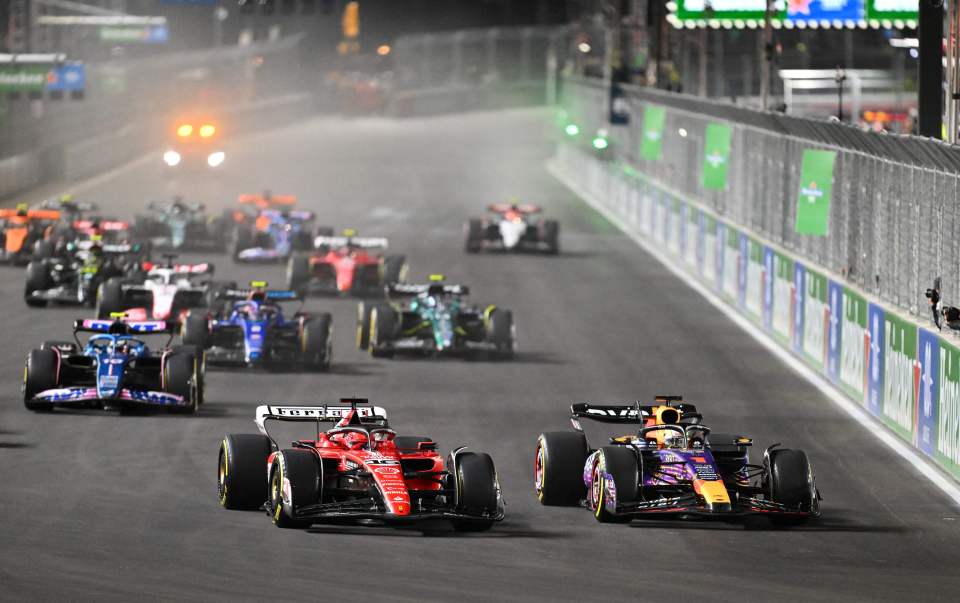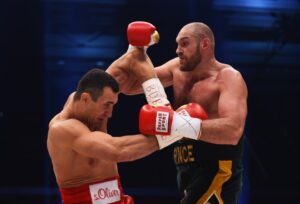Formula 1 returns to the iconic Las Vegas Strip this weekend.
Max Verstappen came back from both a penalty and an on-track clash with George Russell to emerge on top in last year’s action-packed inaugural event, which was punctuated by a number of other incidents.

There were three days of excitement under the Sin City lights in 2023, and it certainly looks like the gamble to end a 41-year absence from Nevada has paid off.
While Vegas was already world renowned for hosting major entertainment and sporting events long before F1 rolled back into town, the new-look Grand Prix found a secret formula to unlock its potential and become even bigger than the Super Bowl.
The biggest game on the American sporting calendar took place at the Allegiant Stadium in Nevada three months after the Vegas GP and was actually upstaged by Lewis Hamilton and co.
Speaking in an interview with Sky Sports ahead of this week’s return, Lori Nelson-Kraft, the race’s senior vice-president of corporate affairs, discussed the economic impacts of both the Super Bowl and the first Vegas GP.
The key to F1’s success, she believes, was the date chosen for the race.
“That weekend before Thanksgiving is typically the slowest weekend in Las Vegas,” Nelson-Kraft explained.
“So strategically, having the race on that calendar date is really a good move.
“We did produce an economic impact report on the heels of the inaugural year that came in at $1.5billion.
“That even surpassed what the Super Bowl generated for Las Vegas as a single event this past year.”
Super Bowl LVIII, which took place in February, had a $1bn economic impact and generated $33.6m in tax revenues for the area.


Nelson-Kraft added that the Vegas GP made more than double that – $77m in taxes locally and throughout the state – with $22m going directly to local schools.
While F1’s return to Vegas generated a clear economic benefit, the three-day event drew complaints over disruption to the lives of locals, workers and businesses operating in and around the famous strip.
Preparation work for the inaugural race lasted nine months, and caused regular closures and diversions on roads long before the F1 cars turned up to race.
This year though, the preparations have been significantly reduced.
“We really looked at the inaugural year and reflected on last year’s successes and learnings,” Nelson-Kraft said.
“And so there’s a lot of evolution that has come into year two to address the circuit installation and preparations. Certainly year one needed to have the paving. That was difficult for the local community and we recognise that.

“This year the circuit installation we saw there was a 65 per cent reduction in what those preparations were and the majority of the circuit installations took place in the overnight hours.”
There was also controversy last year when a loose drain cover was hit by Carlos Sainz’s Ferrari eight minutes into opening practice, causing severe damage to the car – and a huge delay to the session.
Ahead of this weekend’s return, Nelson-Kraft confirmed that ‘all the utility lids along the circuit have undergone a rigorous process to secure them’ and that the issue ‘got a very hard look’.
Aside from that, the 6.2km, 17-corner track, which winds past some of Sin City’s most famous landmarks before a flat-out race down the Strip, remains unchanged in 2024.
It produced plenty of action and overtaking in 2023, adding to the party atmosphere in the grandstands as spectators watched Verstappen storm to victory.
And all eyes will be on the defending F1 champion as he returns to Vegas with a chance to clinch his fourth successive world title.



